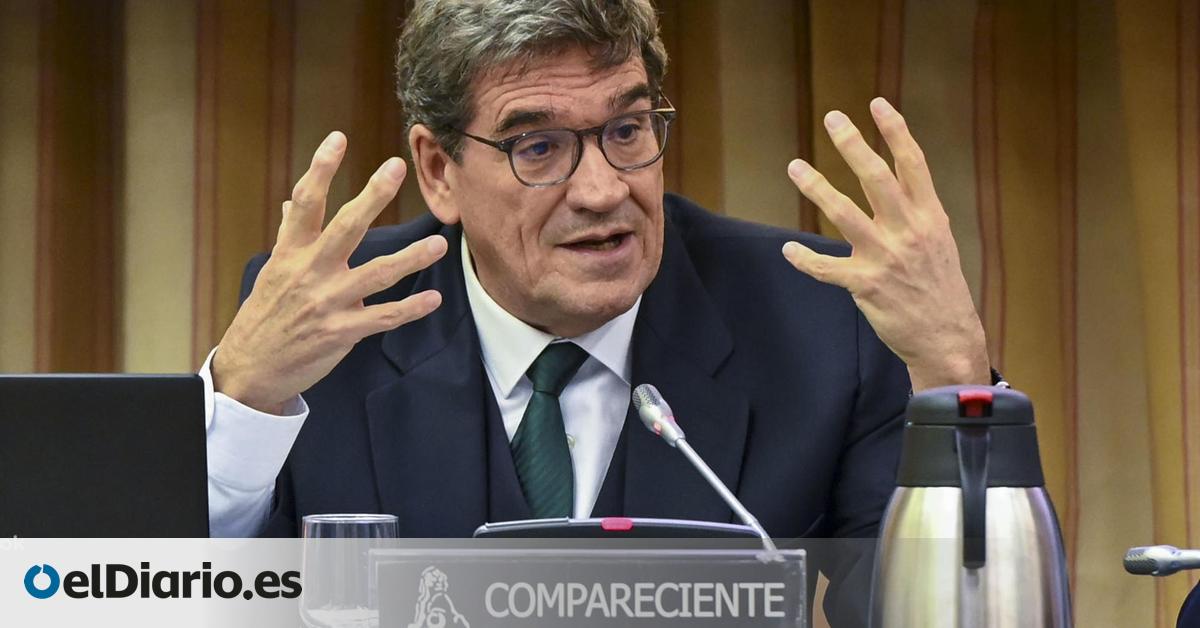
The Bank of Spain has cut the GDP growth forecast (Gross Domestic Product) in 2025 three tenths, from 2.7% to 2.4%, by the commercial war climbing by the United States administration. Governor José Luis Escrivá advanced on Monday in the Economy Commission of the Congress of Deputies the update of the projections of the monetary institution. In 2024, Spain grew 3.3%, contributing almost half of the GDP progress of the entire euro zone.
The European Central Bank (ECB) estimated last week that countries that share currency will grow 0.9% in a set, from 0.8% of last year. That is, our country will continue to lead its main partners in a context of “extraordinary uncertainty”, as José Luis Escrivá stressed.
The inflation projection of the Bank of Spain for this 2025 is moderated to 2.4% on average in 2025, from 2.7% of 2024, while in the whole of the euro area something more will fall, to 2%, according to the ECB.
The lowest rhythm of price increases is a relief for the pocket of families, which, together with the cuts of official interest rates and the deployment of the recovery plan, favor that the consumption and investment of companies are the main GDP engines (as a way of measuring activity), in front of the braking of the foreign sector.
An increase in household spending “supported by a solid labor market, the increase in real income and the fall in inflation,” according to the OECD last week, which also updated its estimates and reduced that of our country to the same 2.4% in the face of this 2025.
The “Base” scenario of the new forecast exercise presented by the governor of the Bank of Spain on Monday assumes exports tariffs to the United States prior to April 2: 10% for exports from the EU to the United States, without European reprisals; of 20% between China and the first power in the world; and 10% for exports from the rest of the world to the North American country.
In addition, “uncertainty levels are gradually reduced from the current maximums to the 2018 levels (Trump’s first mandate) at the end of the projection horizon,” said José Luis Escrivá in his exhibition in the Congress commission. Finally, this “base” scenario assumes a “fiscal impulse related to defense and infrastructure spending, especially in Germany”.
A major brake if the commercial war continues to climb
The governed of the Bank of Spain has raised more pessimistic scenarios. “Something that is not common, but that will be common from now on,” he lamented. The “more adverse” forecasts assume “cross -war reprisals and prolonged commercial uncertainty.” In this “adverse” scenario, the growth of the GDP of our country is reduced to 2% in this 2025, and also inflation, to 2.1% on average in the year.
This pessimistic vision of the commercial war would decelerate the progress of GDP in Spain 1.1% in 2026, from the estimated 1.8% on the “Base” stage.
The truth is that the worst of the consequences of the commercial war would be to come. As assured by the Minister of Economy, Carlos Body, this weekend in an interview at eldiario.es, “we are not seeing a significant impact on commercial flows, beyond some variations due to accumulation of orders in March.”
“It is true that Spain starts from a relatively advantageous position with respect to the rest of the member states due to lower direct exposure, but it indirectly affects us the impact it has on the greats of the euro zone, since it also has a reflection in our economy. Although the estimates have some slight variation, the aggregate impact would be limited. This does not mean that at the sector level and business level it is necessary to try to avoid the damage,” explains Carlos body.
“We launched a line of guarantees, but we are not seeing a need for companies to resort to this additional financing for tariffs,” adds the Minister of Economy. “There are some mismatches that are not translating into a direct impact on our companies. We are in a preventive format rather than absorption of a shock. How long will we be in a negotiation scenario and what will be the final result of that negotiation? What companies tell us is that they expect that in the end we will end at a point of higher level of tariff greater competitiveness in this new scenario against other countries.
“Extraordinary” uncertainty
This Monday, Governor José Luis Escrivá has detailed that “uncertainty is the main factor that is affecting companies according to the Bank of Spain.” In this survey, 30% of the companies “declare to be affected by tariffs. 80% of these declare that uncertainty is a relevant factor,” he said.
Among the most relevant challenges that the monetary institution stands out are in “public finances, in the labor market, in the housing and productivity market.”
Regarding the first issue, “Spain maintains one of the highest debt ratios in the euro area, which limits its margin of response to new shocks and demands a credible tax strategy in the medium term.” The Bank of Spain warns that the fiscal and structural plan of our country does not offer “transparency on the methodology of fundamental elements of the framework.” In addition, he adds, “does not include a sufficient detail of the budgetary measures that have to be adopted to achieve the objectives, nor is it possible to deduce a forecast of income and expenses with a medium -term horizon, nor are the effects on the potential growth of the various reforms and investments explain.”
On the labor market, “in a context of strong employment growth and the population [principalmente por la llegada de inmigrantes]you must act to improve the adaptation of the skills of people looking for employment with those demanded by companies, ”observes the Bank of Spain.
Housing “can be a bottleneck for the economy”
On the housing market, the institution warns that “the shortage of housing stock to deal with the high pace of household creation can become a bottleneck for the economy.”
The presentation of the governed of the Bank of Spain includes the main recent factors that maintain the shortage of housing in our country. Among them are “the shortage of finalist land, the lack of labor, regulatory uncertainty and lack of investment and, finally, the increase in the offer destined for seasonal rental.”
“After accumulating a deficit of more than 400,000 homes in 2022-2024 [viviendas nuevas frente a hogares creados]provisional estimates by 2025, point to an additional deficit of about 150,000 homes, ”said José Luis Escrivá in Congress.“ 50% of this differential is concentrated in Madrid, Barcelona, Valencia, Alicante and Malaga. This situation presses housing prices, ”he concludes.
Source: www.eldiario.es

